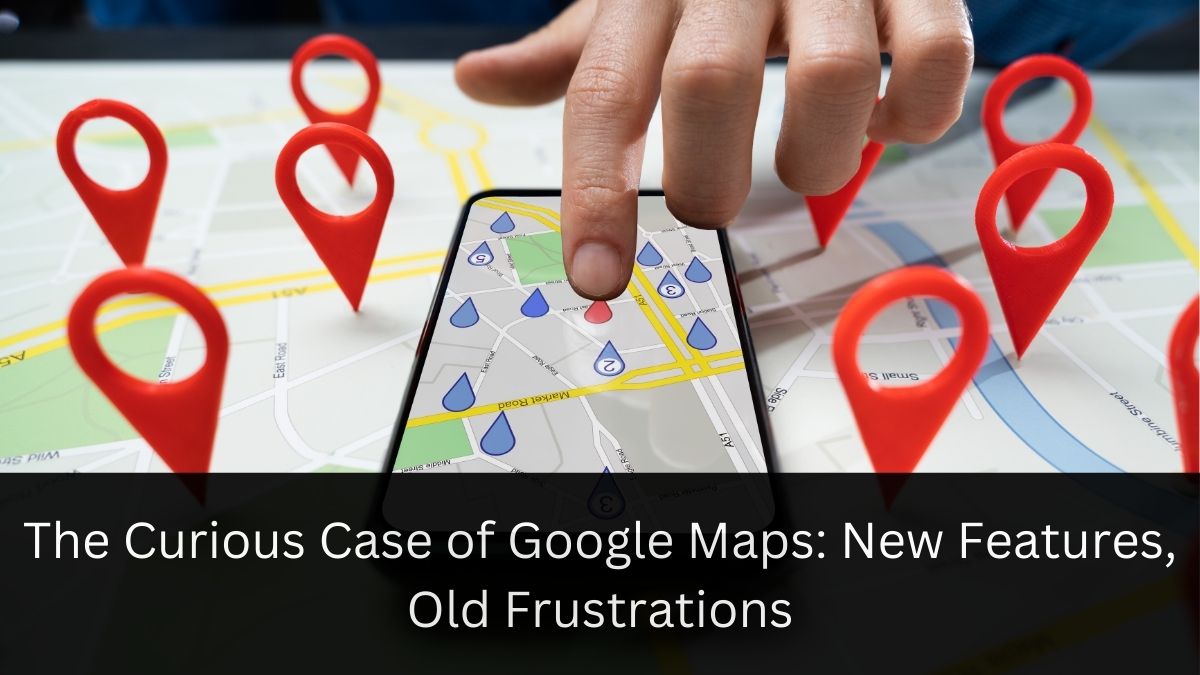Ad Tech
The Curious Case of Google Maps: New Features, Old Frustrations

In the fast-paced world of technology, where innovation seems to know no bounds, it’s often the simplest things that leave us scratching our heads. Take Google Maps, for instance. This ubiquitous navigation app, a staple for millions of drivers worldwide, recently announced new features. Yet, somehow, the one feature many users have been clamoring for remains conspicuously absent.
The Road Trip Dilemma
Picture this: You’re cruising down the highway, the open road stretching out before you. The rhythmic hum of the engine is punctuated by the occasional directions from Google Maps. Suddenly, nature calls. Or perhaps your stomach growls, reminding you it’s been hours since your last meal. You spot a sign for an upcoming rest area and decide to make a quick pit stop.
As you pull off the highway, a familiar scenario unfolds. Google Maps, your erstwhile faithful companion, suddenly transforms into an overzealous backseat driver. “In 500 feet, make a U-turn,” it insists, apparently oblivious to your need for a brief respite from the journey.
The Missing Link: Pause Navigation
It’s a situation that countless drivers have faced, leading to a chorus of voices asking for one simple feature: the ability to pause navigation. Yet, despite Google’s vast resources and cutting-edge AI capabilities, this seemingly straightforward function remains elusive.
The Workarounds
Currently, Google offers a couple of solutions to this common predicament:
- Exit and Restart: The most straightforward approach is to exit navigation entirely and restart it after your pit stop. While effective, this method feels clunky and unintuitive.
- Add a Waypoint: For the more tech-savvy users, adding your stop as a waypoint before deviating from the route can prevent the app from constantly rerouting. However, this requires foresight and additional steps, which isn’t always practical or safe while driving.
The Irony of Innovation
The absence of a simple pause feature stands in stark contrast to the sophisticated capabilities Google continues to add to Maps. In their latest announcement, Google unveiled two new features:
- Enhanced Reporting: Users can now more easily report road conditions such as construction, lane closures, and police presence.
- Improved Destination Visibility: The app will now highlight destinations more clearly, even showing building entrances and nearby parking lots.
While these additions are undoubtedly useful, they serve to highlight the glaring omission of a pause function. It’s akin to a luxury car with all the bells and whistles, but no cup holders.
The Broader Implications
This situation raises interesting questions about the nature of technological progress. In Silicon Valley, where companies pride themselves on eliminating friction from our daily lives, how does such a common pain point persist?
The User Experience Paradox
The irony is palpable. Google Maps, an app designed to make navigation easier, occasionally adds stress to the very experience it aims to simplify. This paradox underscores a crucial aspect of user experience design: sometimes, the most impactful improvements come from addressing the basics rather than adding new features.
Industry-Wide Oversight
Interestingly, this isn’t a problem unique to Google. Apple Maps and Waze (also owned by Google) similarly lack a pause feature. This industry-wide oversight suggests a potential disconnect between developers and the day-to-day experiences of their users.
The Road Ahead
As users continue to voice their desire for a pause function, one can’t help but wonder about the future of navigation apps. Will Google or one of its competitors eventually heed this call? Or will users continue to juggle workarounds for the foreseeable future?
A Call for User-Centric Innovation
This situation serves as a reminder of the importance of user-centric design in technology. While pushing the boundaries of what’s possible is crucial, it shouldn’t come at the expense of addressing fundamental user needs.
The Power of Simplicity
In an era where AI can generate human-like text and cars are learning to drive themselves, the absence of a simple pause button in our navigation apps is a curious anomaly. It reminds us that sometimes, the most revolutionary features are the ones that solve everyday problems.
As we look to the future of navigation technology, perhaps it’s time for companies like Google to take a step back and reassess the basics. After all, in the grand journey of technological progress, it’s often the small conveniences that make the biggest difference in our daily lives.
So, here’s a call to action for the tech giants: While you’re busy mapping the stars, don’t forget about the humble pit stop. Sometimes, the most appreciated innovations are the ones that let us pause, take a breath, and continue our journey on our own terms.
